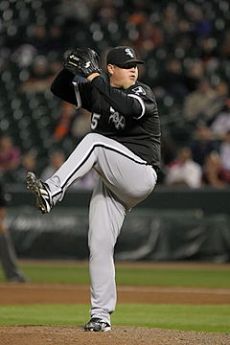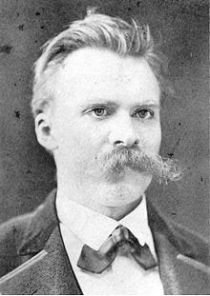Remember when this guy was a closer? Ozzie Guillen would just walk out to the mound motioning his arms outwardly, both vertically and horizontally, to signal for him. You know, because he’s fat (also tall, hence the vertical motions, but moreso fat). What you may not remember is that, in that 2005 White Sox title season, Jenks only saved 6 regular season games, finishing only 18. He didn’t even make his MLB debut until July 6th of that season. And yet, the 24 year-old rookie closer was one of the more recognizable faces of a championship.
(That it is such an ugly face seems befitting for that franchise, but I digress)
Like I said, Bobby Jenks only saved 6 games in the regular season. At least a couple of you would probably remember that it was 32-year old journeyman starter Dustin Hermanson who led the White Sox in saves. After getting his closer feet wet in San Francisco the year before, Hermanson was signed by the Sox to relieve, and did a terrific job in the role. Jenks’ ascendancy was purely because of Hermanson’s unfortunate back problems, and it certainly was not caused by Dustin’s sparkling 2.04 ERA and 1.099 WHIP in 57.1 IP.
But when the White Sox broke camp in 05, neither Hermanson nor Jenks were the closer. The White Sox were counting on 36-year old Shingo Takatsu, a veteran from Japan who turned in a quality season the year before. Shingo would have more difficulty building on that one success than Los del Rio, but it wasn’t a big surprise that Hermanson was his successor. Jenks was the man no one saw coming. Not only was he in the minors at the start of the year, he was picked up via waivers after a dismal 5-year minor league career with Anaheim.
The White Sox won a championship with 3 different closers, one who wasn’t even used to getting hitters out in the minor leagues. They did so in one of the most dominating title runs in history. The Tigers were a mere 71-91 that year, but they too utilized many closers. Troy Percival, then Ugueth Urbina, then Kyle Farnsworth, and finally Fernando Rodney. In an ironic twist given their respective pedigrees, it was Percival who was the only ineffective one in the bunch, thanks to injury.
This is all to explain why it will be A-OK if and when the Tigers install Bruce Rondon as their 2013 closer.
The simple fact is that the installation of a closer on day one is simply a minor concern. The Tigers will have all of 162 games in which to evaluate their closer options. Among those options is the aforementioned Rondon, along with the following: Joaquin Benoit, who was the next choice whenever Valverde needed a rest; Octavio Dotel, he of the 109 career saves; and Phil Coke, who was trusted with the role in the playoffs, and allowed only 1 run in 10.2 innings. If those four options all go exhausted, there is always a trade market. By the count of twitter follower @Nopich, I see 5 closers traded during the 2012 season: Ernesto Frieri, Brandon Lyon, Francisco Cordero, Jonathan Broxton, Brandon League.
The closer mentality is celebrated by many, and by all accounts, Bruce Rondon has that mentality in spades. But ultimately, quite a few pitchers of varying talent have held that job. When teams need to dip into the well to find a replacement, it rarely if ever runs dry.
On the other hand, there is a cost of experimentation. The prospect of losing games in order to find out whether Rondon, Benoit, Coke, or Dotel can hack it in the role all season is unattractive, to say the least. They would be taking on a risk, to be sure. But the volatility of relief pitching makes virtually ever closer decision a risk. Bringing back Valverde after a perfect save % season proved to be a risk. Signing established all-star closer Troy Percival was a risk. Trusting Todd Jones in 2008 was a risk. Some seemed more obvious than others at the time, but there are no sure things in this game.
Besides, Bruce Rondon will have to be a first-time closer at some point. I can think of no better time to experiment than this year: ZiPS projects the Tigers to win the division by about 10 games. I have seen plenty of baseball experiments go wrong, but dropping 10 games because of closer issues stretches the imagination.
PS: ZiPS is none too impressed with Rondon, projecting 45 innings of 5.60 ERA ball with 6.80 BB/9. Rest assured, if he is that bad, he won’t be around long enough to pitch 45 innings.


